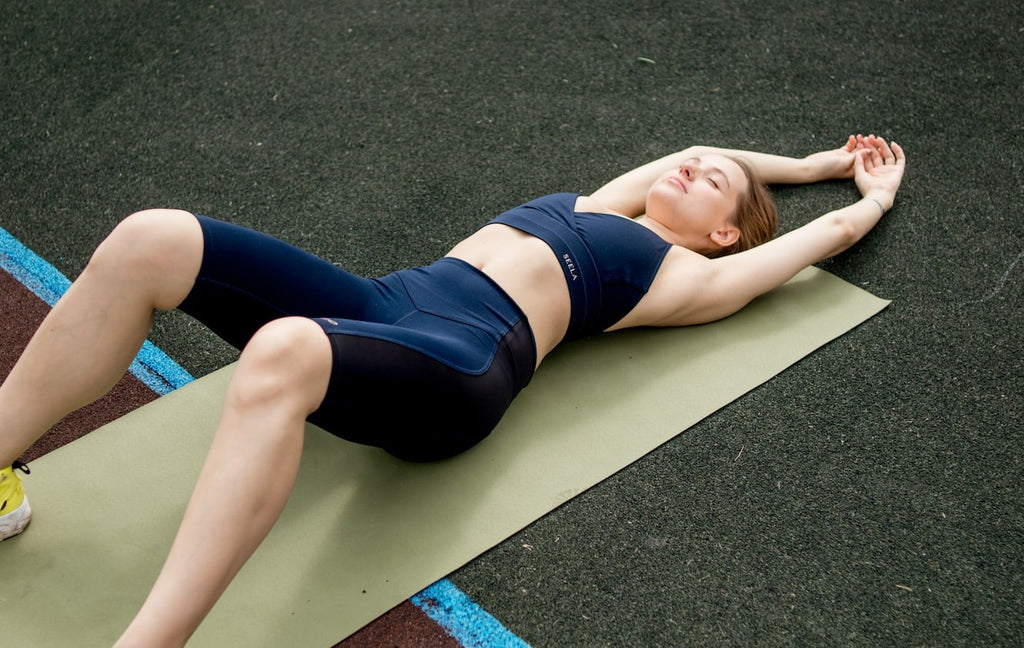Our menstrual cycles are constantly guiding the way our body and mind performs. Understanding the influence of each phase of your cycle is vital to properly caring for your health and fitness. As part of our series, “The Cycle That Guides Us”, we have put together the following overview on what is going on inside us for each phase of our cycle.
Menstruation
Menstruation is the start of our cycle, and is also the most notorious. It’s the time when we experience a variety of unpleasant symptoms, such as menstrual bleeding and cramping of the uterus. Though painful at times, this cramping is an indication that our uterus is doing its job of expelling the endometrium because we didn’t get pregnant during our last cycle.
The good news is that the menstrual phase doesn’t always have to be painful. If our hormones are balanced, we’re more likely to experience a normal period instead of a painful one. There are various ways we can balance our hormones, including eating a healthy diet and supplementing with natural products containing hormone-regulating ingredients made by Mother Nature herself.
Your Follicular Phase
The follicular phase starts with menstruation and leads up to ovulation. This phase is also commonly known as the proliferative phase of the uterine cycle. During this phase, our body goes into follicle production mode. Progesterone remains very low and oestrogen starts at a low level with a gradual increase to reach its peak right before ovulation.
As the oestrogen levels start to rise during this period, we feel more and more energised and strong.
Ovulation
Right when the epic follicular phase ends and the luteal phase starts, ovulation happens. You need to be really familiar with this if you’re trying to get pregnant. During ovulation, your dominant follicle needs to perform well. It needs to release an egg into the fallopian tube so it can be fertilised.
During this phase your oestrogen drops a little and it is common to experience symptoms such as tender breasts, pelvic pain, a rise in body temperature, bloating and mood fluctuations because of the hormonal fluctuations impacting our serotonin levels. The serotonin drop might lead to feeling more sad or irritable and you might also experience food cravings.
Your Luteal Phase
Once the dominant follicle has released a mature egg, it transforms into the corpus luteum during the luteal phase. This phase lasts from the moment of ovulation until the start of our next period. During this time, we also have a brief spike in testosterone, which is the male dominating sex hormone. The corpus luteum is essential for pregnancy. It’s a hormone-secreting endocrine gland located inside the ovary that produces hormones the body requires to prep the endometrium for implantation of a fertilised egg. Thanks to the hormones secreted by the corpus luteum, the endometrium becomes stickier and spongier so an egg can stick to it more easily.
During this phase, your progesterone levels will gradually increase and after a slight drop in oestrogen after ovulation it starts to rise again at the same rate as progesterone. They both reach their peak for the phase around mid luteal phase. After ovulation our body temperature increases slightly which can be used in order to know if you are in the luteal or follicular phase. When our body temperature increases, we also see a slight increase in metabolic rate. When progesterone and oestrogen start to drop mid luteal phase, we start to experience some Premenstrual Symptoms (PMS) such as mood swings, depressions, low energy etc.
The Ebbs and Flows Of Your Hormones
As you can see, those with cycles have primary two hormones, oestrogen and progesterone that are criss-crossing, decreasing and increasing over the course of the month in a fascinating way. Males on the other hand would have more of a straight line of their main sex hormone testosterone across every day of the month with not much else changing in a significant way.
Your follicular and luteal phases can also be split further into early and late stages, as follows:
Follicular Phase
Early - Low progesterone and oestrogen
Late - High oestrogen and low Progesterone
Ovulation - Progesterone starts to rise and oestrogen decline
Luteal Phase
Mid - High progesterone (peak) and oestrogen
Late - Both dramatically decline
You can learn about the impact of your hormones in our hormone guide, which was specifically designed to help you to better understand how to work with your cycle for the benefit of your health and performance.

